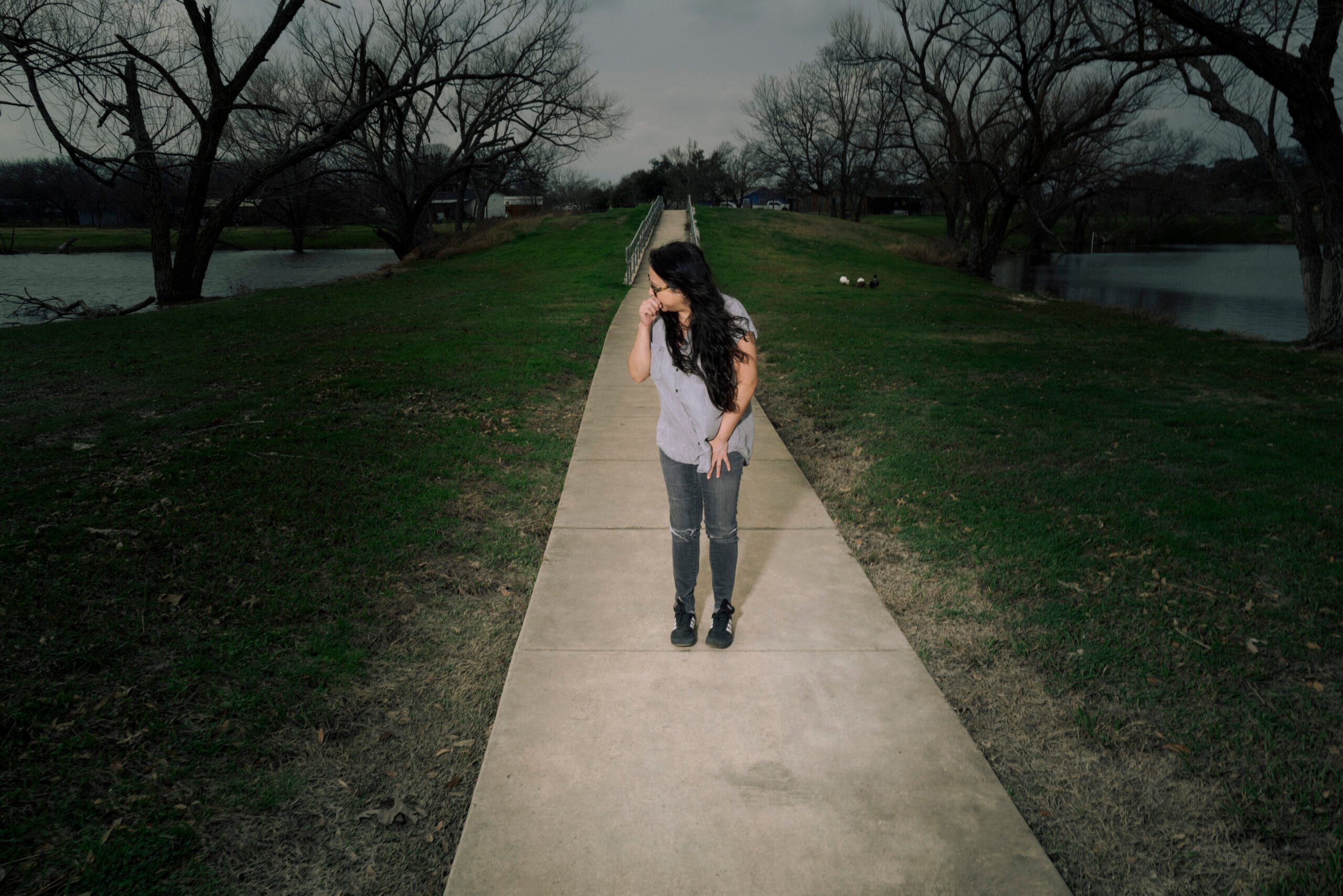
Why Is APD Responding to Mental Health Crises like Violent Crimes?
The police officer who shot Mike Ramos was involved in the death of neuroscientist Mauris DeSilva in July, which called into question law enforcement’s outsized role in mental health incidents.
The police officer who shot Mike Ramos was involved in the death of neuroscientist Mauris DeSilva in July, which called into question law enforcement’s outsized role in mental health incidents.
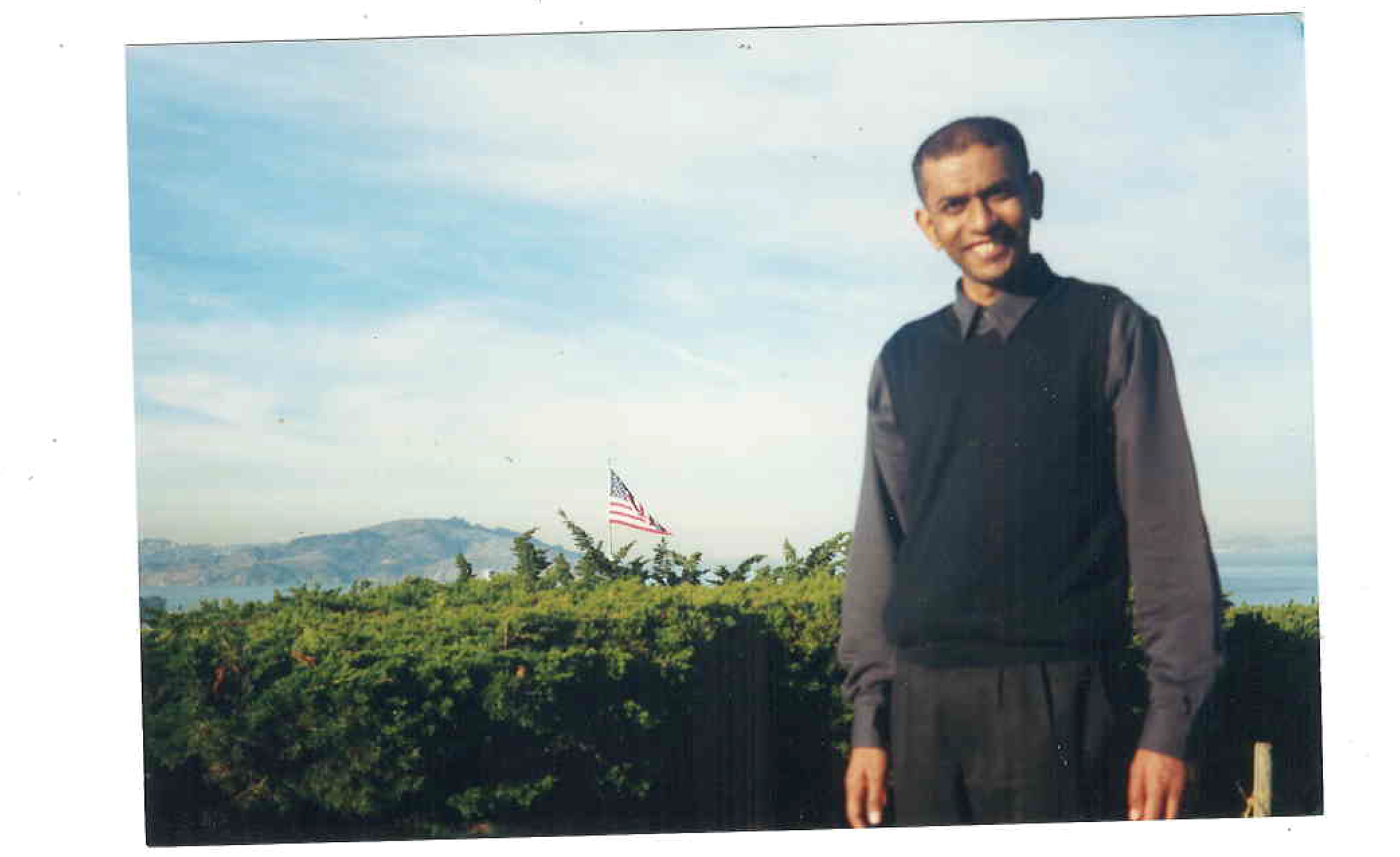
By Michelle Raji
June 4, 2020
If you or someone you know needs help, call 1-800-273-8255 for the National Suicide Prevention Lifeline.
Scientist Mauris DeSilva focused on one of the trickiest parts of the body to heal: the brain.
After getting his doctorate in biomedical engineering, DeSilva worked at labs in Florida and Illinois before becoming a principal investigator with the Naval Medical Research Unit in San Antonio in 2009. There, he and his colleagues came up with a novel way of preventing infection after surgically repairing the bone and tissue surrounding the brain. “These types of projects allow me to do the science I love while also making strides toward helping our warfighters recover quickly after injury,” DeSilva wrote in a U.S. Navy Bureau of Medicine and Surgery blog.
Although the environment was often stressful, DeSilva—who grew up in Sri Lanka—enjoyed many aspects of his job. He studied nerve cell regeneration, neural networks, the autism spectrum, and—on top of that—mentored students.
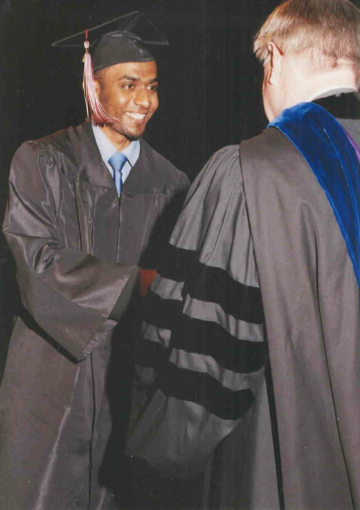
“He had so many good ideas, coming left and right, as far as improving the lives of people out there,” said Tony Yuan, an adjunct professor at the University of Texas at San Antonio who DeSilva mentored. “That was the philosophy of his work.”
But outside of the lab, DeSilva—who loved long-distance running and cooking for others—struggled. In 2013, his former co-worker Reneé Ahlf noticed a change in her friend. DeSilva began missing work, then showing up drunk. His mental state deteriorated, culminating in what his friends and family characterized as a breakdown that landed him in the hospital.
Over the next few years, DeSilva would go from long periods of stability to stretches of depression and manic periods of increased energy, racing thoughts, and delusions. But no one knew what, exactly, was wrong. His friends and coworkers thought he had bipolar disorder; his brother, James DeSilva, thought he had PTSD from a toxic work environment; his father believed it was depression.
“There were times when he would get on the phone and just cry,” Ahlf said. “It was just like, ‘Mauris, what can we do?’”
On July 31, 2019, a Wednesday afternoon, police received a call about a man banging on the emergency exit doors of a condominium building in Austin’s affluent Seaholm District downtown. Another 911 caller spotted the man outside the complex holding a knife to his own neck. It was DeSilva. According to the Austin Police Department, by the time three police officers arrived on the scene, DeSilva had gone inside the apartment building, where he had lived since 2012. The officers located him in the fifth floor gym holding the knife to his throat. According to Police Chief Brian Manley, DeSilva did not respond to officers’ commands and instead walked toward them with the knife in his right hand. Two of the officers shot him; another tasered him.
Around 6 p.m., DeSilva was pronounced dead. He was 46.
The shooting launched internal investigations, but all evidence, including body camera footage, was concealed from the public. Denzil DeSilva, the victim’s father, is pursuing a civil suit against the city of Austin, hoping to understand why his son’s mental health crisis was treated like a violent crime—why he wasn’t directed to the care that he needed. “I want people to know that he was a good person, never harmed anyone, just because he wanted to harm himself doesn’t mean he wanted to harm anybody,” he told the Observer.
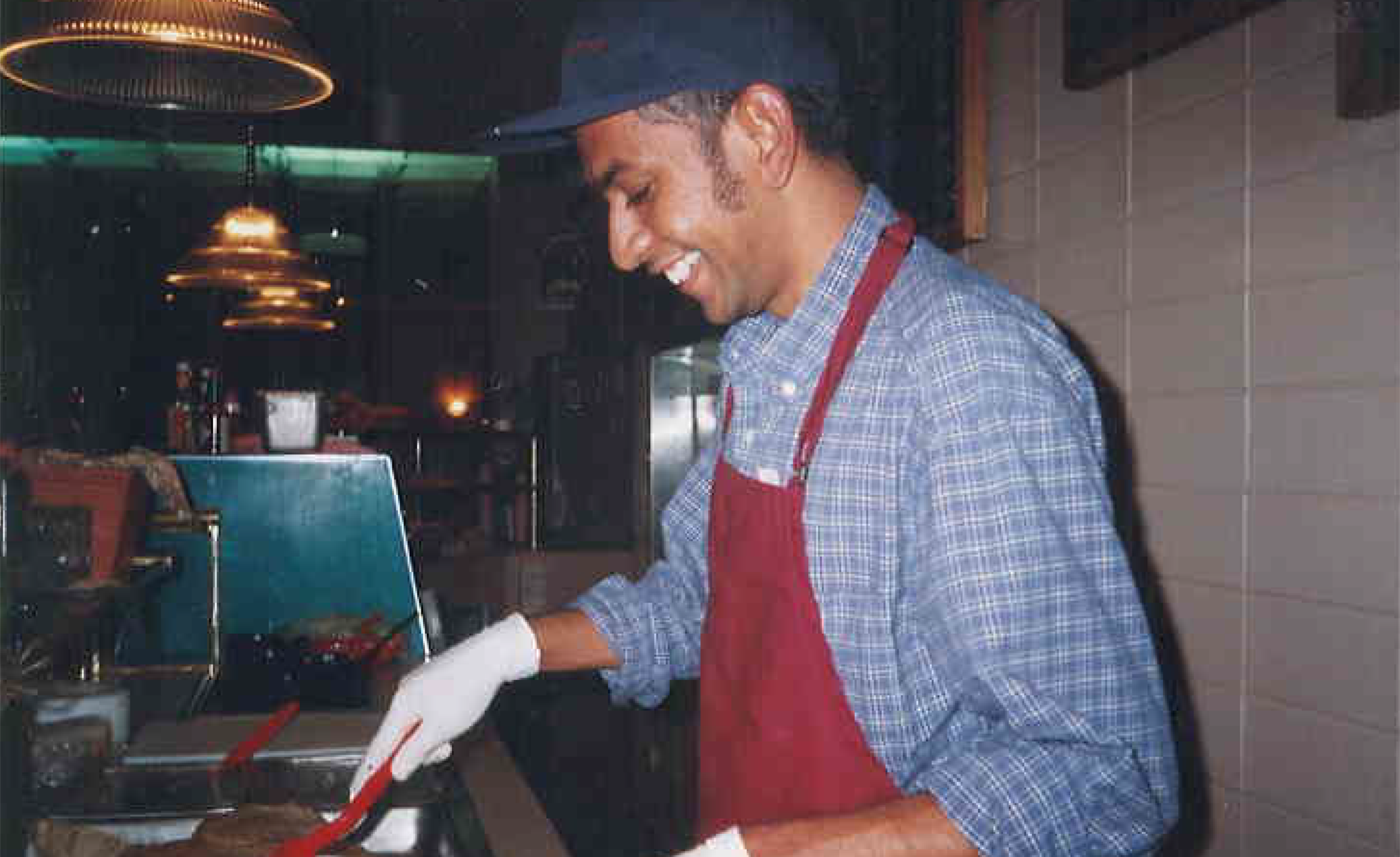
In January, the presiding judge in the case, Eric M. Shepperd, ruled that the City of Austin should produce all previously shielded evidence before May 20. A month before the deadline, one of the officers involved in DeSilva’s death, Christopher Taylor, shot and killed Michael Brent Ramos, an unarmed Black and Latinx man.
After Ramos was killed by Taylor, DeSilva’s father petitioned the court to enforce the ruling and release the evidence. On June 1, two weeks past the deadline, the city released the evidence to DeSilva’s attorney, Aspen Dunaway. “All the available evidence will show that at no point, when the Officers Taylor and Krycia observed Dr. DeSilva, did he represent a danger to any officer,” Dunaway wrote in a press statement released Tuesday. The evidence has not been released to the public, per a court order.
Meanwhile, protesters across the country have taken to the streets following the death of George Floyd, a Black man killed by police in Minneapolis. In Austin, Ramos has become a central figure in the demonstrations against police brutality. This weekend, Ramos’ mother, Brenda Ramos, called for justice. “Why is Officer Taylor still drawing a paycheck from us, the citizens of Austin?” she asked. “Why are we paying his salary when he murdered my son over a month ago and he murdered someone else’s son 10 months ago? Why isn’t he in jail?”
***
Of the top 15 most populous U.S. cities, Austin has the highest per capita rate of fatal mental health-related police shootings: According to a 2018 city audit, a third of the 24 people killed in police shootings from 2010 through 2016 had confirmed mental health conditions, compared to a national average of 22 percent. Since 2008, APD reported a 95 percent increase in mental health-related calls. The audit suggests that Austin’s rapid growth has outpaced its resources, partially explaining the elevated rate of mental health-related police shootings.
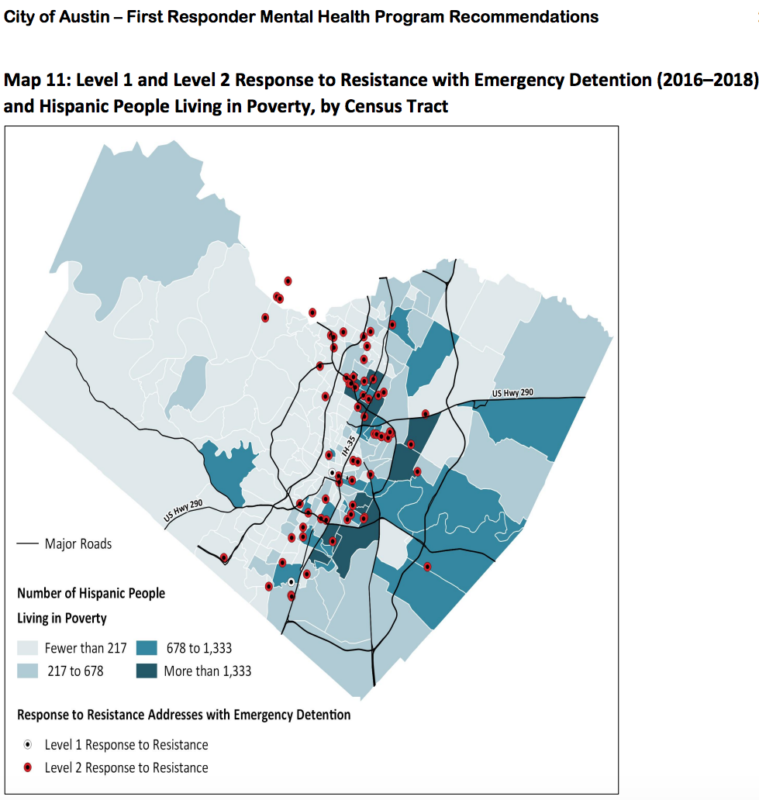
According to a separate audit by the Meadows Mental Health Police Institute, most of the city’s mental health-related incidents involving police use of force are “in densely populated areas that include people of color who are living in poverty” along Interstate 35 and in East Austin. Incidents in those areas are also more likely to involve more severe use of force, such as tasers, dogs, or strikes to the head. Austin Police Department has not released use of force data by race or ethnicity, even after requests from the data analysis nonprofit Measure.
Two years before DeSilva’s death, Morgan Rankins, a 30-year-old Black woman with a psychology degree from Huston-Tillotson University, was killed by an Austin police officer while holding a knife during a bipolar manic phase, according to her family. The Travis County District Attorney’s Office found that the use of force was justified.
Roughly nine months before DeSilva was killed in July, two of the officers who responded to DeSilva’s call—Joseph Cast and Karl Kyrcia—confronted a knife-wielding subject without discharging a firearm. According to a report by the officers’ superiors, the white woman had a knife, was yelling and making threats in the doorway, and refused commands to drop the weapon. She was tased and arrested without further incident.
Currently, all cadets in APD get 40 hours of mental health training, which is required by the 2017 Sandra Bland Act, named in honor of the 28-year-old Black woman who died in a Waller County Jail following a routine traffic stop. That training is supposed to help them determine whether to detain someone in a mental health crisis. After two years on the force, the Texas Commission of Law Enforcement provides an optional additional 40 hours of crisis intervention training, teaching officers how to de-escalate mental health emergencies and coordinate treatment with local behavioral health providers.
Sergeant Steve King, an officer in the crisis intervention training unit, says there is no specific protocol for de-escalating incidents involving weapons. “There are so many variables depending on where you’re at, environment and all that. It just depends on each call,” King says.
Still, at an Austin City Council budget hearing last August, a coalition of community members and racial justice organizers called Communities of Color United emphasized that, protocol or not, the ways law enforcement respond to mental health crises disproportionately affect people of color.
Citing the death of DeSilva and other incidents, they demanded a freeze or reduction in the police department budget, and more funding for public health care. Now, those demands are being echoed nationwide.

In September, the city passed a budget that included increased funding for officer crisis intervention training and stipends for “mental health officers,” police officers who have taken 40 hours of additional crisis intervention and are tasked with responding first to mental health-related calls. According to the city audit, 41 percent of Austin police officers have received additional crisis intervention training.
Austin’s city council also added training for emergency dispatchers, four clinicians at the 911 call center, and increased funding for the Expanded Mobile Crisis Outreach Team (EMCOT), a group of mental health professionals who can respond with law enforcement or Emergency Medical Services (EMS) when a call involves a psychiatric crisis.
Since mid-December, EMCOT members have been moved into the 911 call center, which has increased their call volume. But EMCOT is dispatched from 911 only when requested by a police officer or first responder. And there are not enough clinicians to meet the deluge of calls for care: From 2014 through 2017, mental health accounted for about 7 percent of the roughly 146,000 emergency calls in Austin. In 2019, only 1,331 clients were referred to EMCOT from law enforcement.
That gulf reflects the difference in investment between so-called public safety and public health. In September, the city approved the hiring of 30 additional police officers, contributing to APD’s record $375.6 million operating budget. For comparison, $67.1 million is set aside for EMS or $42.3 million is allocated to Austin Public Health.

The Austin Justice Coalition, a group advocating for racial justice, suggested after DeSilva’s death that EMS reverse the order of first response to mental health crises, with EMS community health paramedics responding first. If an involuntary detention is necessary, paramedics could call on EMCOT or a police officer as a “second” responder.
This model has worked in Eugene, Oregon, where teams of medics and crisis workers provide immediate care to people in moments of crisis. That team handles 20 percent of all public safety calls. When someone calls 911, they hear “mental health service” as a response option.
Advocates in Austin imagine a different way to respond to mental health crises, one that involves gathering a comprehensive mental health history and—importantly—following up to give emergency services a better sense of how to approach the next crisis.
“It’s really important to have a safety plan or crisis plan that involves family and other support or psychiatric advanced directives,” says Margaret Balfour, an assistant professor of psychiatry at the University of Arizona. “Down the line you may be at a point where you aren’t thinking rationally.”
***
The day he was killed was not the first time that DeSilva had been in a mental health crisis involving police.
In mid-February of 2015, DeSilva showed up at his friend Ahlf’s house in San Antonio, confused and agitated. “For some reason, Mauris had a thing with knives,” Ahlf says. “He came into the kitchen and he was looking through the drawers.” Much like the night he died, he picked up a knife with the intention of hurting himself. Ahlf called DeSilva’s physician and then 911. DeSilva, who was not holding the knife when officers arrived, was taken to the hospital without incident. Ahlf says that the police officers dealt with DeSilva well, evaluating his mental state, de-escalating the situation, and connecting him to care.
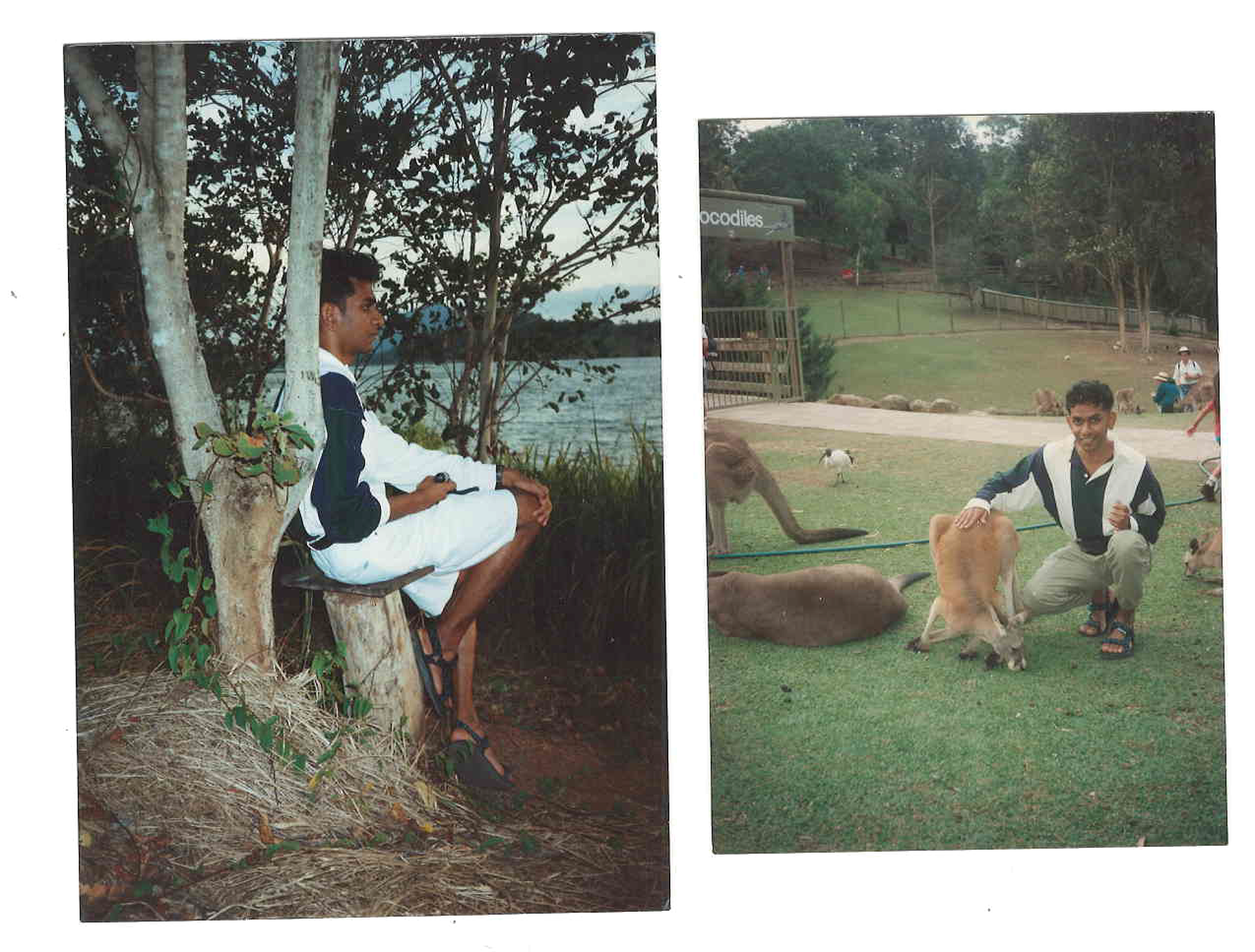
A recent HBO documentary brought attention to the San Antonio Police Department, which has been lauded by national media for its mental health response. Virtually all officers there have received crisis intervention training, and there is a dedicated mental health response unit with specially trained officers. The department estimates these changes have diverted 100,000 people from jail to treatment since the creation of the unit in 2008. (Although people with mental illness are still dying in Bexar County jails, as the Observer has reported.)
But being directed to a hospital instead of jail does not mean that people are getting the resources they need. People in crisis are most often sent to emergency rooms that don’t have the resources to provide psychiatric support, Balfour says.
And some question police departments getting involved in emergency mental health care at all, a burden they have shouldered nationwide since the deinstitutionalization of people with severe mental illnesses began in 1955.
While crisis intervention training is proven to lead to officer-level changes in attitude—such as asking for a person’s name before giving them orders, speaking quietly and slowly instead of yelling, and giving them space instead of crowding them—this training hasn’t been demonstrated to reduce use of force or improve engagement with treatment.
“We have to be careful not to romanticize what this could look like,” says Karen Ranus, executive director of the National Alliance of Mental Illness Central Texas. “I don’t think we necessarily want to expand our crisis [intervention training unit] team and police officers become the primary ones to respond to those situations.”
With the recent uptick in mental health crises and police violence during the COVID-19 pandemic, cities like Austin need a plan that fills the dangerous void between law enforcement and care, Ranus says. “Otherwise what you see are communities like ours that [are] cobbling things together. You get enough momentum and some funding and it’s like, ‘OK, let’s cobble this little piece together and see what kind of change we can make.’” Without a long-term plan, she says, it’s difficult to change anything.
The solution might be as interdisciplinary as DeSilva’s research.“I just remember all these long conversations I had with him,” says Tony Yuan, his former Ph.D. student, “starting on one topic about this new nanoparticle … [moving] into a completely different topic.” His research combined many different fields, an approach that Yuan has also adopted.
In an essay given to the Observer by his father, Mauris DeSilva wrote that the current practice of regenerating cells was limited—it only replicated already existing structures. “Can we think beyond the structure and focus more on the function?” he asks, imagining how one might engineer a softball-shaped liver that functioned better than a normal one.
A future with more care and less policing could be similar.
Read more from the Observer:
The Protests Against Police Brutality in Texas, in Photos: Demonstrations against police brutality are taking place in cities large and small across Texas.
‘Heroes’ No More: Grocers Are Already Clawing Back COVID-19 Worker Benefits: Kroger revoked its “Hero Pay” in May, while public health experts warn of COVID-19 surges as Texas reopens.
Dallas County Judge Clay Jenkins on Battling COVID-19, and the Governor, as Texas Reopens: “Now we’re just working with this unprecedented state usurpation of local control, trying to keep people safe as best we can.”

